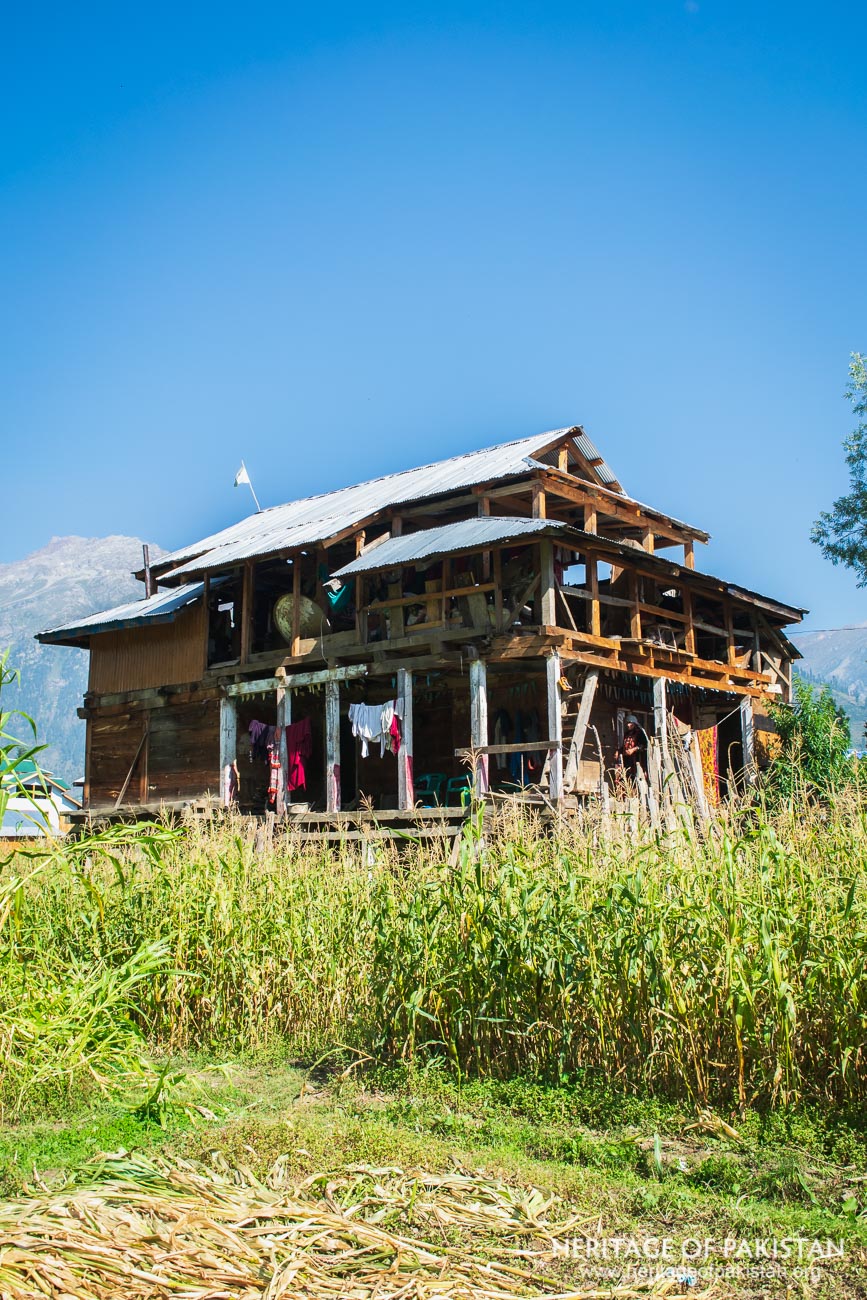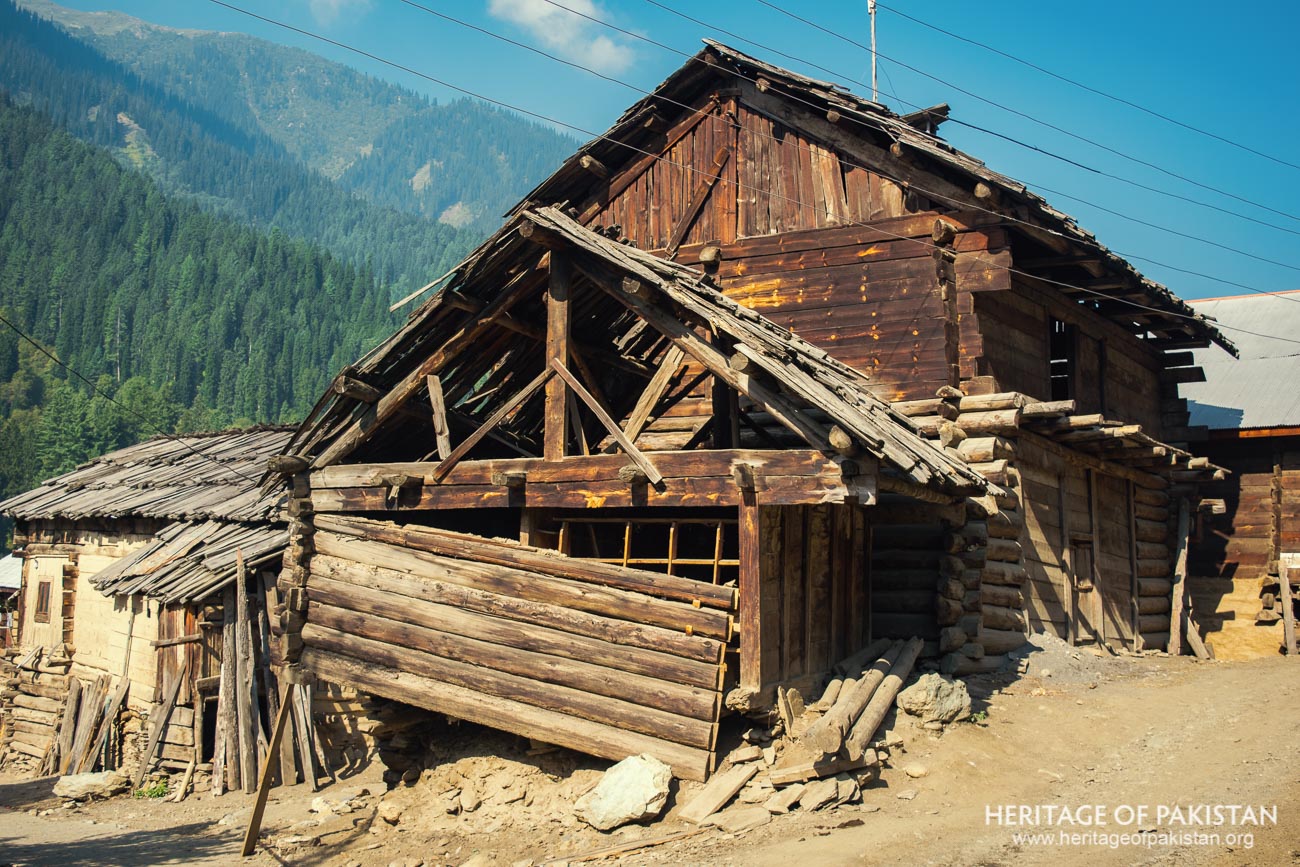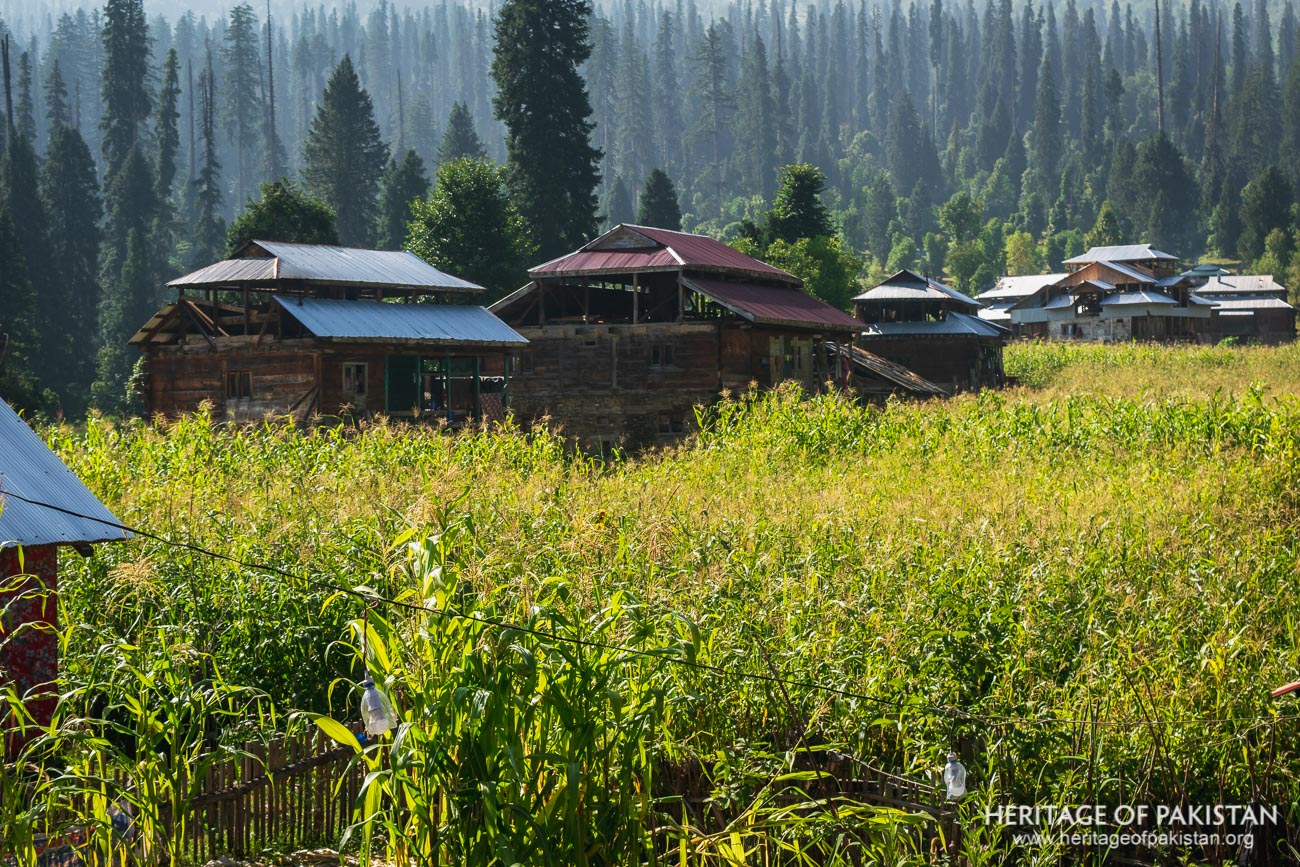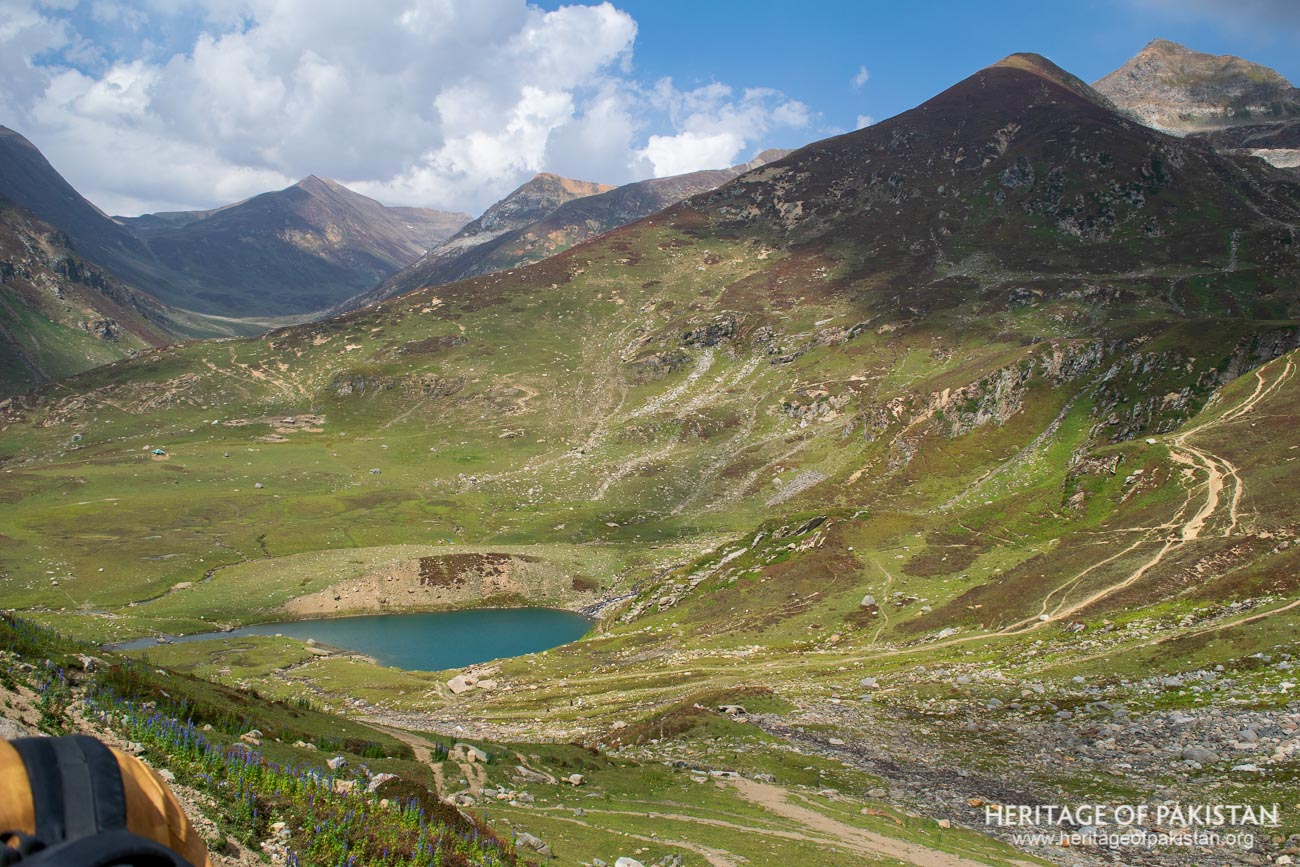Did You Know?
Neelum Valley’s villages, like Taobat and Arang Kel, still preserve traditional Kashmiri wooden architecture, blending seamlessly with the landscape
34°35'17.7"N 73°54'40.2"E
Neelum Valley’s villages, like Taobat and Arang Kel, still preserve traditional Kashmiri wooden architecture, blending seamlessly with the landscape
The Best Time to Visit Azad Kashmir Region is Summers. Preferably from April to September. Winters are Extremely Cold and Snowfall blocks most of access. Hence Winters are not recommended.


Neelum Valley, situated approximately 45 km from Muzaffarabad, is one of the most scenic and historically significant regions of Azad Kashmir. The valley encompasses District Neelum, which has its administrative headquarters in Attmuqam and is divided into the Attmuqam and Sharda tehsils. The valley derives its name from the Neelum River, which flows through its length, shaping both the geography and settlements of the region.
Neelum Valley is home to some of Pakistan’s most renowned tourist destinations, including Kutton, Keran, Kel, Arang Kel, and Taobat. While the valley is celebrated for its mountainous landscapes and alpine meadows, it also holds architectural and cultural significance. Traditional Kashmiri wooden architecture is well preserved in several villages, particularly Arang Kel and Taobat, where vernacular structures remain largely intact. The region’s built environment reflects its historical ties to Kashmir and Baltistan, demonstrating a continuity of architectural traditions that have adapted to the valley’s climatic and topographical constraints.
Beyond its geographical and cultural value, Neelum Valley holds strategic significance due to its proximity to the Line of Control (LoC), the de facto border dividing Azad Kashmir from Indian-administered Kashmir. At locations such as Keran, the LoC is distinctly visible, with settlements existing on both sides of the river.
Keran serves as the first major stop for visitors entering the valley. Situated along the Neelum River, it functions as a gateway to the upper regions and offers lodging and rest facilities for travelers. From Keran, the road extends towards Sharda, a site of immense historical and religious importance. Sharda Peeth, an 8th-century Hindu temple and learning center, once attracted scholars from across the subcontinent. The temple played a significant role in the development of the Sharda script, which influenced written traditions across northern India.
Beyond Sharda, the Neelum Valley road leads to Kel, a hill station positioned at 2,141 meters above sea level. Kel serves as a staging point for travelers heading towards Arang Kel, a remote village perched on a high plateau. Accessible via a chairlift or a steep trek, Arang Kel is characterized by wooden Kashmiri-style houses, expansive cornfields, and vibrant sunflower meadows. Its elevated position offers panoramic views of the valley, making it one of the most visually striking locations in the region.
The final and most remote settlement in the valley is Taobat, the last inhabited village before the Indian-administered territory. Taobat remains largely untouched by modern development, retaining its traditional wooden architecture and agrarian lifestyle. Some of the finest examples of Kashmiri vernacular architecture can be observed in Taobat, where wooden multi-story houses with intricate craftsmanship continue to define the built landscape.
Neelum Valley experiences mild summers, with temperatures ranging from 10°C to 25°C between May and September. However, winters are severe, with heavy snowfall isolating the upper regions for months. While tourism has significantly contributed to the local economy, it has also led to environmental concerns, including deforestation, unregulated construction, and ecological degradation. Sustainable conservation efforts are necessary to preserve both the natural beauty and cultural heritage of the region.
Despite these challenges, Neelum Valley remains one of the most significant cultural and ecological landscapes in Pakistan, offering an unparalleled blend of history, architecture, and natural scenery.


The architecture of Neelum Valley is deeply rooted in the region’s climate, geography, and cultural traditions. The villages of the valley, particularly Taobat, Arang Kel, and Kel, feature vernacular wooden architecture, a style developed over generations to withstand the harsh winters and mountainous terrain.
Traditional houses in the valley are built using wood, stone, and mud, materials that are locally available and well-suited for insulation and durability. The houses are usually multi-story structures, with a ground floor for animals and storage, a first floor for living spaces, and an attic for additional storage. The ground floor is made of stone masonry, which protects against moisture and snow damage, while the upper floors are constructed with timber, providing warmth and flexibility against earthquakes.
A distinctive feature of these houses is their climate-responsive design. Small windows help retain heat while allowing ventilation, and wooden roofs provide insulation against heavy snowfall. Entrances are elevated, usually six feet from the ground, preventing snow accumulation from blocking access. The storage of firewood outside houses is a common sight in winter, ensuring a steady supply of fuel for heating.
The interior layout is carefully planned to accommodate both human and agricultural needs. The kitchen often serves as the central heated space, where families gather during the extreme cold. Animal fodder is stored on the ground floor, ensuring easy access during winter months.
The mosques of Neelum Valley, such as the one in Arang Kel, follow a traditional Kashmiri architectural style, featuring a square base, a pyramidal roof, and intricate wooden carvings. These structures highlight the valley’s architectural connection to Kashmir and Baltistan.
Despite modernization, Neelum Valley’s traditional architecture remains an essential part of its cultural identity, offering both functionality and resilience in a challenging environment.


Neelum Valley, located in the Western Himalayas, experiences a temperate summer and a harsh winter due to its high-altitude terrain. From May to September, temperatures range between 10°C and 25°C, making it the ideal time for visitors. Winters, however, bring heavy snowfall, often cutting off access to the upper regions such as Kel, Arang Kel, and Taobat.
The valley is home to dense alpine forests, glacial streams, and lush green meadows, creating a rich ecosystem. The Neelum River, flowing through its length, supports both agriculture and local wildlife. The forests host a variety of flora and fauna, including pine, fir, and deodar trees, as well as species like leopards, foxes, and pheasants.
However, increasing tourism and deforestation pose a threat to the region’s fragile ecosystem. Sustainable tourism and conservation efforts are essential to preserving Neelum Valley’s natural beauty and ecological balance for future generations.


Discover the Neelum Valley image gallery and immerse yourself in photographs

All Photographs by Syed Noor Hussain and Sania Azhar.
All Rights Reserved. Photos may be used for Non-Commercial, Educational, Artistic, Research, Non-Profit & Academic purposes.
Commercial uses require licensing agreement.


Add a review